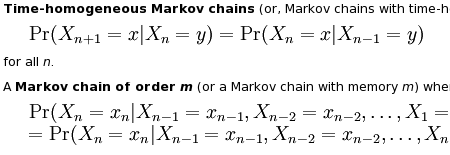Nikos pinged me just in time about the MicroMedia 5 minute meetup. That’s basically a virtual meeting of a bunch of people, who each provide their own answer to one specific question. Since the meetup is virtual, the answers should have been provided virtually as well. And since it was all about micromedia, it was logical to expect micromedia tools to be used. The question this time was: “What is the future of communication?“.
That’s one broad question if seen from all perspectives. To avoid a non-stop thinking exercise, I limited myself to a version like “What is the future of communication from micro media point of view?“. For those of you, who don’t know what micro media is all about, here is a quote from the meetup wiki:
- Text: Microblogging tools like Jaiku, Twitter, Pownce, or Text messages
- Audio: Twitter Gram, Utterz, Audioblogger, or other
- Images: Get creative here, can you tell a story from photos?
These tools rushed into our digital lives recently, and got a large and important place there. The applications of these tools vary from personal notes to corporate meetings, but most people use these for communication purposes. So, here are the questions that I got thinking about:
- How are these tools going to change in the future?
- Will we get some new ones? Will the old ones stay? How much will those that will stay change?
- What kind of tools will people prefer and why?
- How will these tools be utilized?
- How will people’s lives change because of these tools?
There is a lot that I can say answering these, but most of it will be just water with no proof or reason to it. For me it’s mostly based on personal experiences and feelings, rather then any specific studies or statistical data or anything like that.
Before I go on, here is the short answer the meetup question that I posted to Twitter.
Twitter-type short text services with open API and mobile/SMS integration will rule the future for a long time.
Now, for the long story.
I think plain text will dominate images, video, and sound for a very long time. That’s not going to change in any foreseeable future. I think so because:
- Text is way easier to produce. Most of electronic devices these days have some sort of keyboard attached. Text can be easily produced in a number of ways – full featured keyboard, simple mobile phone like keyboard, one button keyboard with a cycle through the alphabet, mouse/joystick pointer, speech to text conversion, etc.
- Text is way easier to search. Modern search engines are at the point of extracting meaning (when you tell them “car”, they understand that you mean “car”, “automobile”, “vehicle” and so on. When you tell them “the sound of bass”, they understand that you are probably talking about music rather than fishing).
- Text is much easier to consume. Most people won’t have troubles recognizing parts of the texts without reading them through letter by letter. Most people skip chunks of texts when reading longer pieces. Most people won’t have any troubles reading several texts at the same time.
- Text is more portable and accessible. Read it from the screen or print it out or even re-write it by hand. Devices that are needed to move text around are much cheaper and simpler than those for sound and video.
Now, most people will prefer short chunks of text to long chunks of text. I’d rather read two sentences and move on to the next news section or topic, than spend three days trying to figure out what the author is trying to say. Most people I know will have hard times writing an article one page long on any subject at all. All the same people will have no problem spitting out a sentence or two. Again, on any subject at all.
Because of the above, I think that short text services will blossom. And they already grow pretty fast.
Which of these are better? Those that are simpler to use. Twitter is doing a really good job here. One large text box, one submit button, and a counter of how many characters you have left for this message. Nothing more. It’s difficult to make it even simpler.
But ease of use shouldn’t be only for the end user. It should be from all sides of the service. And again Twitter is doing a pretty good job of it.  It has a simple and straightforward API, which allows programmers to create applications for this service in just a few lines of code (a few is as in one or two lines of code). It has an RSS feed for everything, so it’s easy to get things out of it. It has plenty of automation – TinyURL integration, direct messages, tracking, etc. It has SMS integration, so it’s easy to use on the move.
Stuff like that will be at the top of micro media, I think.
Of course, other technologies will move forward, as they always do. It will be easier and easier to create and move around sounds, videos, and whatever else is there. Devices will get smaller. Connections will get faster. The content will get richer.
But, as with many other things, the limiting factor won’t be in the technologies. It will be in people. Think about images for example. Those were with us for thousands of years. Yet, only a few of us can draw a semi-decent picture. And photography is of no help here. Millions of terrible images out there show as to how effective we are with cameras. We see things in 3D. Images are 2D. The software will hardly ever do a proper conversion. And humans will hardly spend the time learning about the topic to do it themselves. Videos are even more complex – we can’t manage static pictures properly, and now we have a full power to work with moving images. Sounds aren’t much different.
People are buying multi-core multi-CPU hi-end machines and use them to play minesweeper mostly.  You give them a mobile phone which can control half of the universe, and they won’t even bother about an address book in it. I don’t think this will ever change. Things might improve both from the people’s and technology’s sides, but the huge gap will always be there.
These are my thoughts on how this whole micro media communication will play out in the future…

